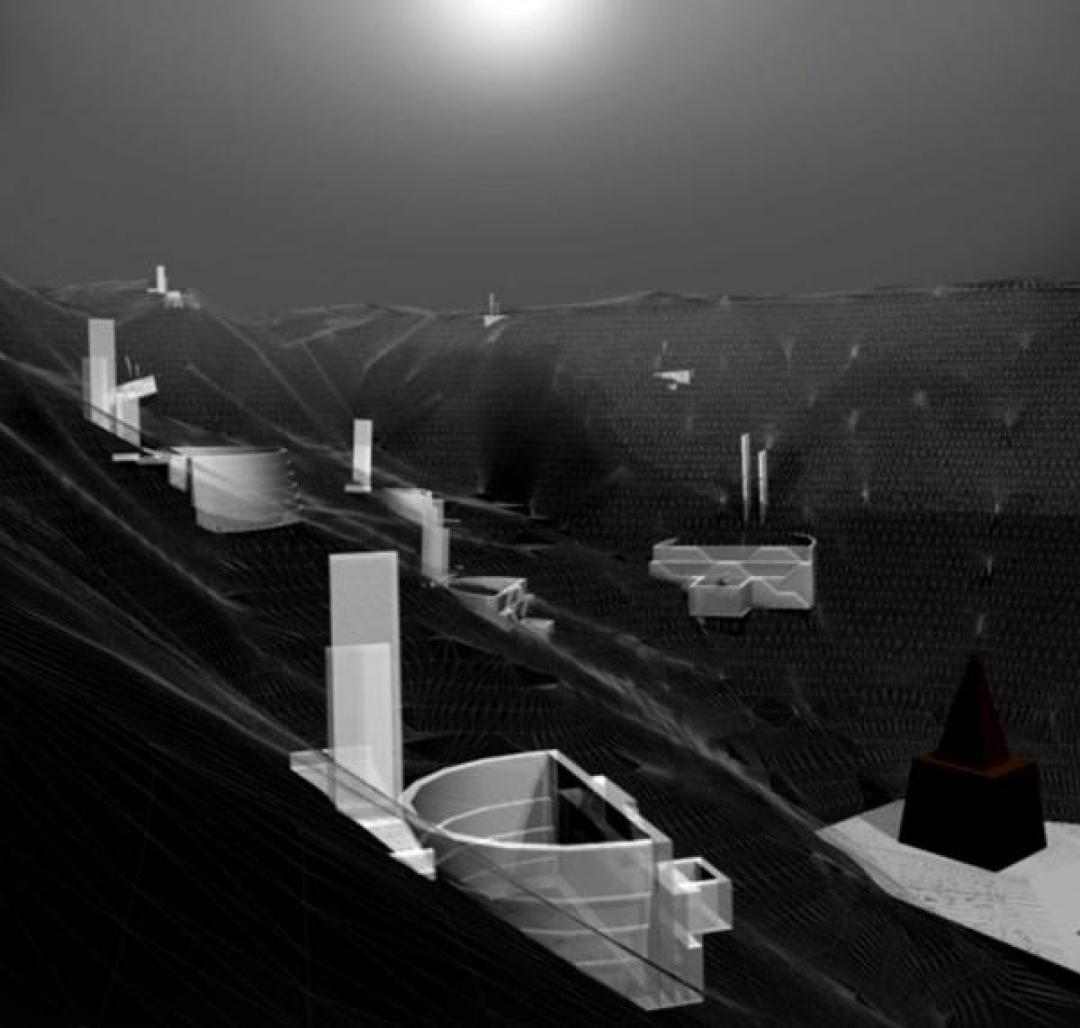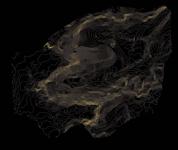Smriti Van Earthquake Memorial, Bhuj - 2004
Kutch is a dry, arid, desert land. But for over a millenia it has been inhabited by a culturally diverse but rich agrarian and nomadic society. Despite the intense heat, acute scarcity of water an extremely rich craft based culture has sustained itself in this inhospitable terrain. The earth quake memorial or Smriti Van is envisaged as a rejuvenation of this landscape and as a tribute to the extraordinary resilience of the people and their acceptance of the calamity with great equanimity.
The client`s brief for the memorial was plantation of 13805 trees, each tree representing one victim. The implication would have been a merely ornate landscape dependent on an external source of energy for sustainability. In essence a convenient but unbefitting tribute to the spirit of the people and their lost ones.
Given the setting of the undulating terrain with an extensive water shed, the vision for Smriti Van was recast as a self sustaining habitat optimising the watersheds through check dam reservoirs which will nourish a mix of trees down stream without any external dependence for energy.
These reservoirs, in essence will become the actual memorials. With plaques commemorating the victims, plinths and plazas for the kith and kin to sit and reminisce and associative deities & festivals to celebrate the cycle of life, death and rebirth. The reservoirs would be the actual anchors of Smriti Van { the memorial } and the trees auxiliary to them.
For the choice of the trees again the client`s mandate was to opt for only one or two local species which would have bred a mono culture. However, for the identity and recognition of each victim as an individual and this diversity to represent a harmonious existence of varied individuals in a community, a mix of tree species ranging from seasonal to fruit bearing to evergreens is proposed. This will ensure blossoming of flowers and fruits through the year. This bio-diverse ecology will attract birds, bees and insects round the year which will result in the cross pollination, hybridization & diversification of the flora and enrich the ecology.
The topography leads to 108 reservoirs - a universally divine number. The levels of the terrain dictates the orientation of the reservoirs such that some are floating above the others, almost arranging themselves as “Astral” and “Terrestrial” along the streams and the trails. The additions of stellae, totems and stairs in these structures reinforce their connections to the cosmos. A bridge between the sacred and the temporal.
The Architect: Rajeev Kathpalia Is a partner at Vastu Shilpa Consultants, one of India`s leading Architecture, Urban Design and Planning practices. His work has received national awards and honors and has been published and exhibited internationally.
He has taught and lectured extensively in India and abroad. He is member on the board of studies of several urban design faculties and is also the joint Director and Trustee of the Vastu Shilpa Foundation, a non profit research organization in environmental and habitat design.
2004





.jpg)



.jpg)
